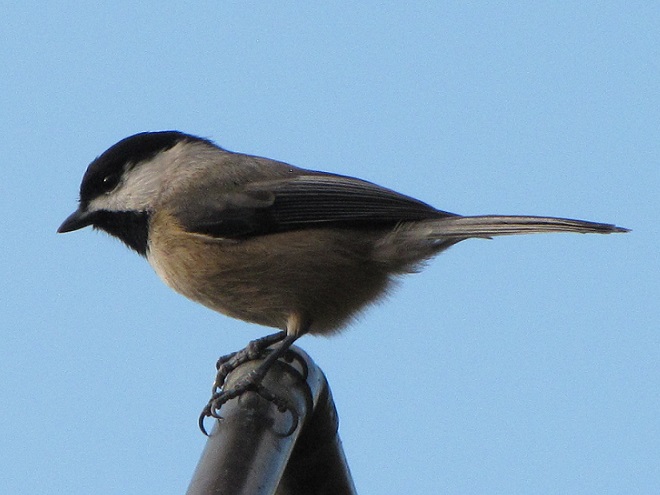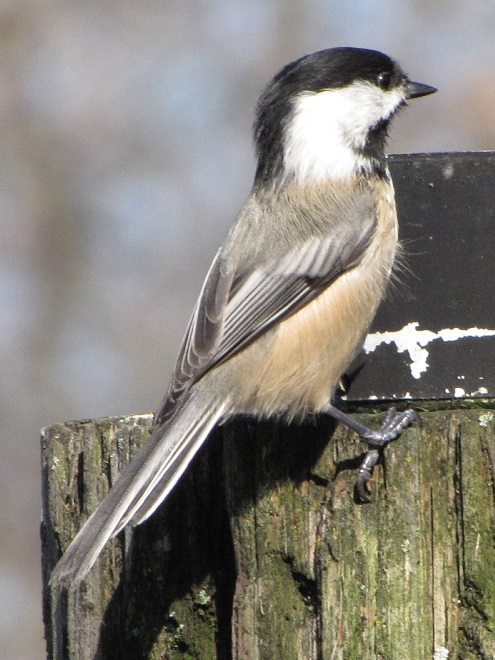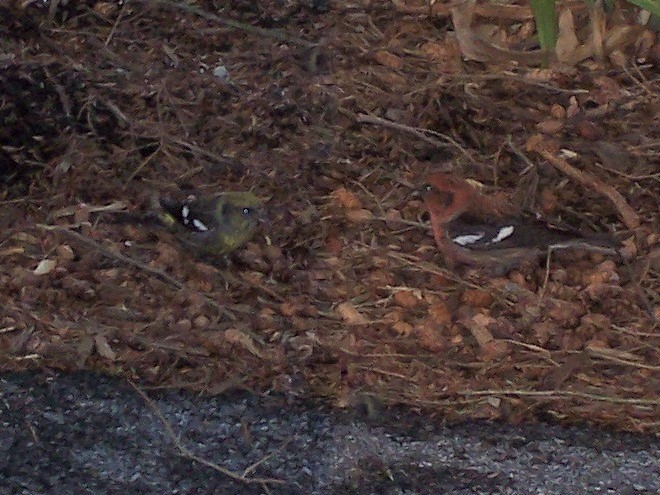Our cute lovable chickadees are resident birds, remaining in the same general area throughout the year, often throughout their lives. In the Mid-Atlantic States, there are two species. The tiny Carolina Chickadee is at the northern limit of its geographic range in the Piedmont Province of southcentral Pennsylvania. The slightly larger Black-capped Chickadee is a year-round resident mostly to the north of the Lower Susquehanna River Watershed. Within the Susquehanna basin, an intergrade zone of the two species occurs in the mountains and bottomlands of the southern portion of the Ridge and Valley Province just to the north of the Pennsylvania cities of Carlisle, Harrisburg, and Lebanon. The range of the Carolina Chickadee, as well as the hybrid zone, has gradually crept north during the last fifty years—as much as twenty or thirty miles—while the range of the pure-bred Black-capped Chickadee has simultaneously withdrawn almost entirely from the lower Susquehanna, particularly in the valleys.
Every few years, presumably when their numbers are too great for the sustenance available from the wild food crop in their home range, Black-capped Chickadees invade the more southerly range of both Carolina Chickadees and the hybrids in the intergrade zone. This appears to be one of those years. Black-capped Chickadees are working their way south and showing up at feeding stations stocked with sunflower seeds, safflower seeds, and/or peanuts—sometimes in flocks numbering five to ten birds or more.
Let’s take a closer look at the two species…


Not only is now a good time to carefully check the chickadees you see, but it’s an opportune time to watch for other invaders from the north, specifically the “winter fiches” including Pine Siskins, Evening Grosbeaks, Purple Finches, Red Crossbills (Loxia curvirostra), and White-winged Crossbills (Loxia leucoptera). During recent weeks, each of these species has been reported by observers at hawk-counting stations on local ridgetops, an indication that they too are experiencing inadequate food resources in their home ranges.
So, as winter approaches, you’ll want to keep an eye on those feeders—and don’t forget to keep an ear on the pines and hemlocks. The rewards could be many!

